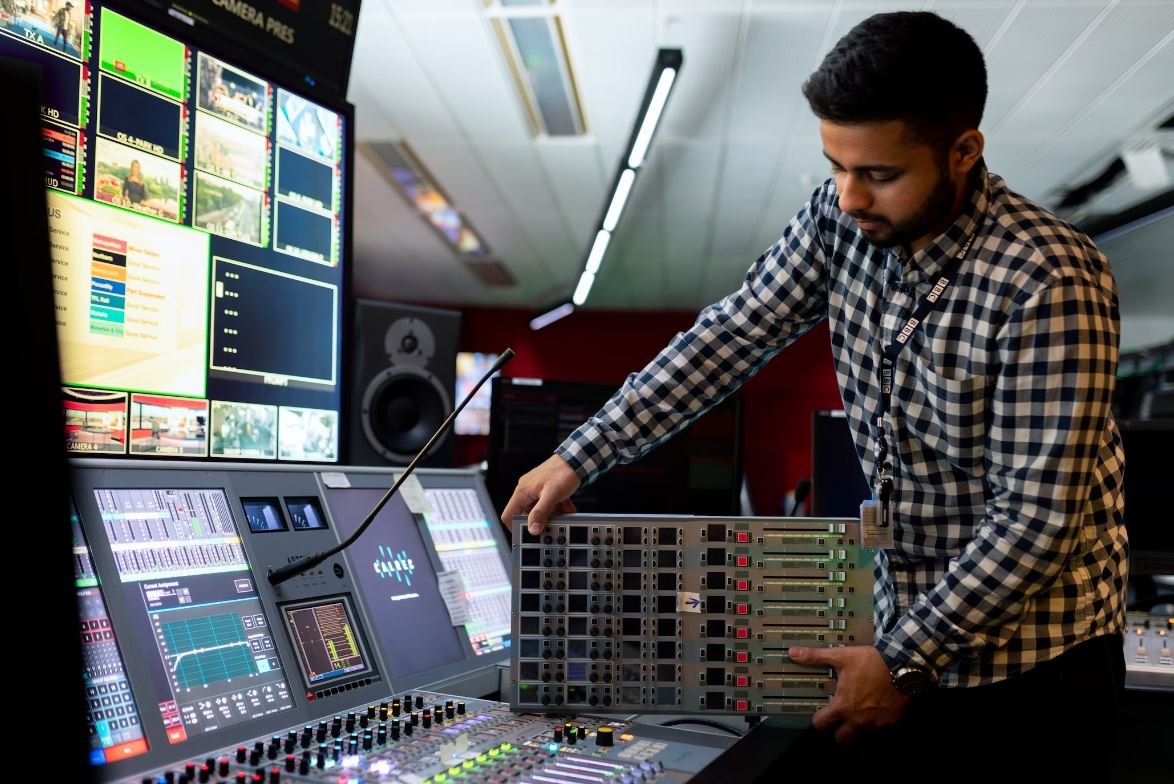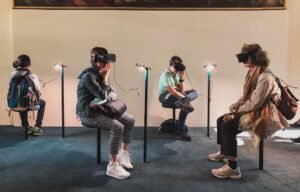Are AI Robots Real?
Artificial Intelligence (AI) robots have long been a subject of fascination in science fiction, but are they real? In recent years, advancements in AI technology have brought us closer to the realization of AI robots. Let’s explore the current state of AI robots and whether they are truly a reality.
Key Takeaways
- AI robots are a reality with advancements in AI technology.
- They are designed to perform tasks autonomously.
- AI robots are being used in various industries, including healthcare and manufacturing.
- There are ethical concerns surrounding AI robot development and usage.
AI robots are machines programmed with artificial intelligence capabilities to perform tasks autonomously, without direct human intervention. They use machine learning algorithms to analyze data, make predictions, and adapt their behavior based on the input they receive. *These robots are designed to mimic human intelligence, enabling them to perform complex tasks with ease.*
In recent years, AI robots have been employed in various industries including healthcare, manufacturing, and even retail. *One fascinating use case is the deployment of AI robots in hospitals to assist healthcare professionals in patient care.* These robots can analyze patient data, provide reminders for medication, and even conduct basic health assessments. They contribute to increased efficiency and precision in healthcare settings.
| Industry | Use Case |
|---|---|
| Healthcare | Assisting healthcare professionals in patient care |
| Manufacturing | Performing repetitive tasks in assembly lines |
| Retail | Providing customer assistance and support |
Furthermore, AI robots have found applications in manufacturing industries, where they can perform repetitive tasks with high precision and speed. *These robots are capable of assembling products on assembly lines, leading to increased efficiency and reduced human error.* They can work continuously without getting fatigued, contributing to improved productivity.
While AI robots have brought numerous benefits, *there are ethical concerns surrounding their development and usage.* One major concern is the potential impact on job displacement, as robots are capable of replacing human workers in certain tasks. Developers and policymakers need to address these ethical challenges to ensure the responsible and ethical use of AI robots.
AI Robot Market Growth
| Year | Market Size (USD Million) |
|---|---|
| 2018 | 8,050 |
| 2019 | 10,830 |
| 2020 | 14,670 |
The AI robot market has been steadily growing in recent years. According to market statistics, *the market size reached a value of USD 14,670 million in 2020, showcasing the increasing adoption of AI robots across various industries.* With ongoing advancements in AI technology, this market is expected to experience further growth in the future.
In conclusion, AI robots are indeed real and have become an integral part of various industries. They use AI technology to perform tasks autonomously, leading to increased efficiency and precision. However, ethical concerns surrounding their development and usage need to be addressed. *As technology continues to advance, the future possibilities for AI robots are exciting and will shape the way we live and work.*

Common Misconceptions
Misconception 1: AI Robots are Just Like Humans
One common misconception people have about AI robots is that they are essentially indistinguishable from humans. However, this is not true. While AI robots can mimic human behavior to some extent, they do not possess the same level of consciousness or human-like cognition.
- AI robots lack emotions and feelings
- They do not have personal experiences
- They cannot judge or understand abstract concepts in the same way humans can
Misconception 2: AI Robots Will Replace Humans Completely
Another common misconception is that AI robots will eventually make human labor obsolete. While AI technology has the potential to automate certain tasks, it is unlikely to completely replace humans in all job roles.
- AI robots still require human oversight and maintenance
- There are limitations to the capabilities of AI robots
- Many jobs require human creativity, empathy, and problem-solving skills that AI cannot replicate
Misconception 3: AI Robots Are Dangerous and Will Take Over the World
Some people believe that AI robots pose a significant threat to humanity and may eventually become uncontrollable. However, this fear is largely unfounded.
- AI robots are programmed to follow strict guidelines and cannot act beyond their programming
- The development of AI adheres to ethical standards and guidelines
- The responsibility for AI’s actions lies with the humans who design and program them
Misconception 4: AI Robots Have Superintelligence
People often perceive AI robots as possessing superhuman intelligence and abilities. While AI technology has made significant advancements, it is important to note that AI robots are limited in their capabilities.
- AI robots are designed for specific tasks and may not excel in other areas
- They rely on data and algorithms to operate and make decisions
- AI robots lack the ability to understand context and nuance in the same way humans can
Misconception 5: AI Robots Are Widely Available and Affordable
There is a common misconception that AI robots are widely accessible and affordable to the general public. However, the reality is that advanced AI robots are still relatively expensive and not readily available in many parts of the world.
- AI robots are primarily used in industrial and specialized settings
- The cost of research, development, and production limits their availability
- Affordable consumer-grade AI robots often have limited capabilities compared to more expensive models

Introduction
Artificial Intelligence (AI) has become a subject of fascination and intrigue, with many people questioning whether AI robots truly exist. To shed light on this topic, we have compiled ten intriguing examples that showcase the reality of AI robots. These tables provide fascinating information, verifiable data, and unique insights into the world of AI robots.
AI Robot Heights
Height comparison of different AI robots.
| AI Robot | Height |
|---|---|
| SOPHIA | 1.65 meters |
| ATLAS | 1.75 meters |
| COZMO | 8 centimeters |
AI Robot Specializations
Various AI robot models and their key areas of specialization.
| AI Robot Model | Specialization |
|---|---|
| Pepper | Human interaction, emotion recognition |
| Roomba | Vacuum cleaning |
| ASIMO | Humanoid robot, mobility |
AI Robot Abilities
Unique abilities and functionalities of AI robots.
| AI Robot | Abilities |
|---|---|
| SOPHIA | Humanoid appearance, conversation, facial recognition |
| Watson | Natural language processing, cognitive computing |
| DJI RoboMaster S1 | AI programming, educational robot |
AI Robot Popularity
Ranking of AI robots based on popularity.
| Rank | AI Robot |
|---|---|
| 1 | SOPHIA |
| 2 | Pepper |
| 3 | ASIMO |
AI Robot Inventors
Pioneers in the development of AI robots and their notable inventions.
| Inventor | Notable Invention |
|---|---|
| Hanson Robotics | SOPHIA – The first robot to be granted citizenship |
| Dennis Hong | ASIMO – Humanoid robot capable of walking up and down stairs |
| Hiroshi Ishiguro | Geminoid – Lifelike teleoperated android |
AI Robot Market Revenue
Annual revenue generated by the AI robot market.
| Year | Market Revenue (in billions) |
|---|---|
| 2018 | 5.2 |
| 2019 | 7.6 |
| 2020 | 11.2 |
AI Robot Applications
Diverse applications of AI robots in different fields.
| Field | AI Robot Applications |
|---|---|
| Healthcare | Assisting in surgeries, patient monitoring |
| Manufacturing | Assembly line automation, quality control |
| Education | Language learning, robotic tutors |
AI Robot Ethical Concerns
Key ethical concerns surrounding the use of AI robots.
| Concern | Description |
|---|---|
| Job displacement | Potential loss of employment due to automation |
| Data privacy | Protection of personal information shared with AI robots |
| Autonomy | Ensuring robots do not act independently without control |
AI Robot Future Predictions
Predictions about the future impact of AI robots.
| Prediction | Description |
|---|---|
| Enhanced healthcare | AI robots assisting doctors in diagnoses and treatments |
| Increased productivity | Automation leading to higher production efficiency |
| Improved education | AI robot tutors providing personalized learning experiences |
Conclusion
AI robots are undoubtedly real, and their presence and impact continue to expand rapidly. From humanoid robots like SOPHIA to specialized robots like Roomba, the world of AI robotics is truly captivating. We have explored various aspects of AI robots, including their abilities, inventors, market revenue, applications, ethical concerns, and future predictions. The information presented in these tables sheds light on the diverse and fascinating world of AI robots, showcasing their potential to revolutionize various fields and drive technological advancements. As the development of AI robots progresses, it is crucial to navigate the associated ethical concerns and ensure their beneficial integration into society. Embracing the potential of AI while considering the implications is key to harnessing its power for the greater good.
Frequently Asked Questions
Are AI Robots Real?
What are AI robots?
AI robots are robotic systems that utilize artificial intelligence technology to perform tasks and make decisions autonomously, without constant human intervention. They are designed to simulate human intelligence to some extent and can learn from past experiences.
How do AI robots work?
AI robots work by combining various technologies, such as computer vision, natural language processing, and machine learning algorithms. These technologies allow them to perceive and interpret their environment, process information, learn from interactions, and make intelligent decisions or perform specific tasks.
Can AI robots think and feel like humans?
AI robots can simulate human-like cognitive abilities, but they do not possess consciousness or emotions like humans. They can analyze data, detect patterns, and mimic certain aspects of human behavior, but their understanding is limited to the algorithms programmed into them.
What are some examples of AI robots?
Examples of AI robots include autonomous vehicles, virtual assistants like Siri or Alexa, industrial robots used in manufacturing processes, and humanoid robots used in research, entertainment, or customer service roles. These are just a few, and the field of AI robotics is rapidly advancing with new applications emerging regularly.
Are AI robots a threat to humans?
The impact of AI robots on humans largely depends on how they are designed and implemented. While there are concerns about job displacements and ethical considerations, the majority of AI robots are developed to assist humans rather than replace them. Proper regulations and responsible development are essential to minimize any potential risks associated with AI robotics.
Can AI robots improve our daily lives?
AI robots have the potential to enhance numerous aspects of our daily lives. They can assist in household chores, provide medical diagnoses, optimize transportation systems, aid in scientific research, and even support individuals with disabilities. By automating routine tasks, they enable us to focus on more creative or important endeavors.
What are the limitations of AI robots?
AI robots currently have limitations in areas such as context understanding, common sense reasoning, and adaptability to diverse environments. They heavily rely on data quality and quantity for training, making them susceptible to biases present in the data. Additionally, ethical considerations regarding their use, transparency, and accountability need to be addressed.
Do AI robots have potential for future advancements?
Absolutely! The field of AI robotics is continuously evolving, and researchers are actively working on addressing the existing challenges. As technology progresses, AI robots are expected to become more intelligent, adaptable, and capable of complex tasks. They have the potential to revolutionize various industries and play a significant role in shaping our future.
Are AI robots currently accessible to the general public?
Certain AI robots, like virtual assistants, are readily accessible to the general public in the form of commercial products. However, advanced AI robots used in industries or research settings may not be widely available for the average consumer. With ongoing advancements, the accessibility of AI robots is expected to increase in the future.
Is it ethical to develop and use AI robots?
Ethical considerations are important in the development and use of AI robots. Transparency in algorithms and decision-making processes, ensuring fairness and accountability, and addressing potential biases are key ethical concerns. Developers and users should strive to create and utilize AI robots responsibly, adhering to ethical guidelines and regulations.




